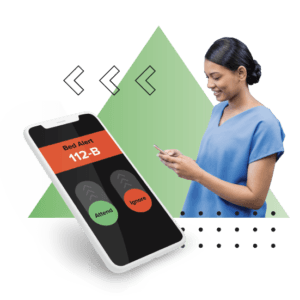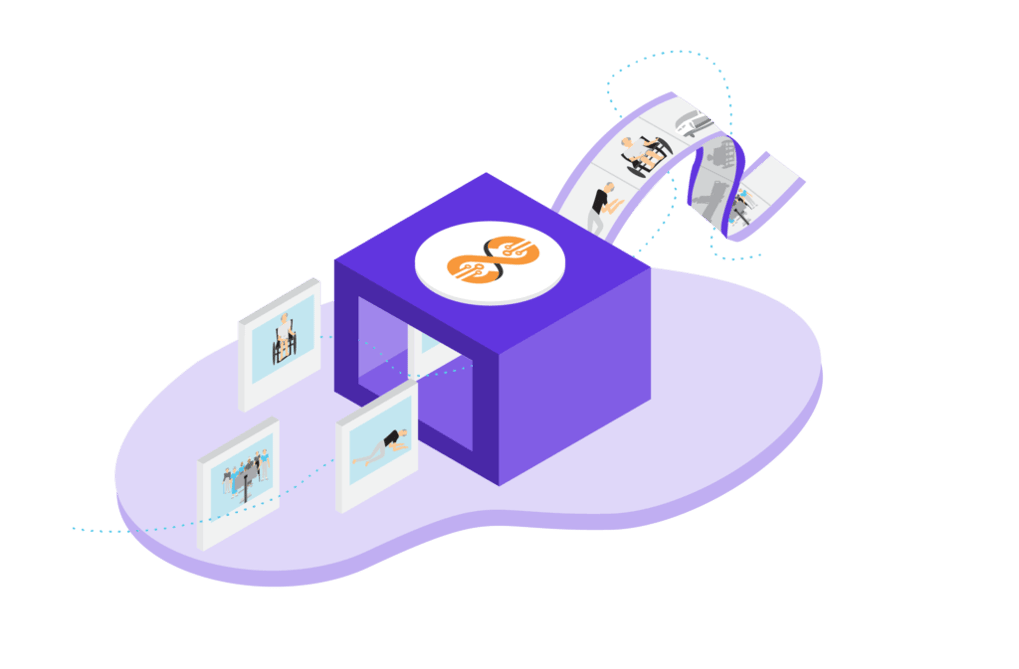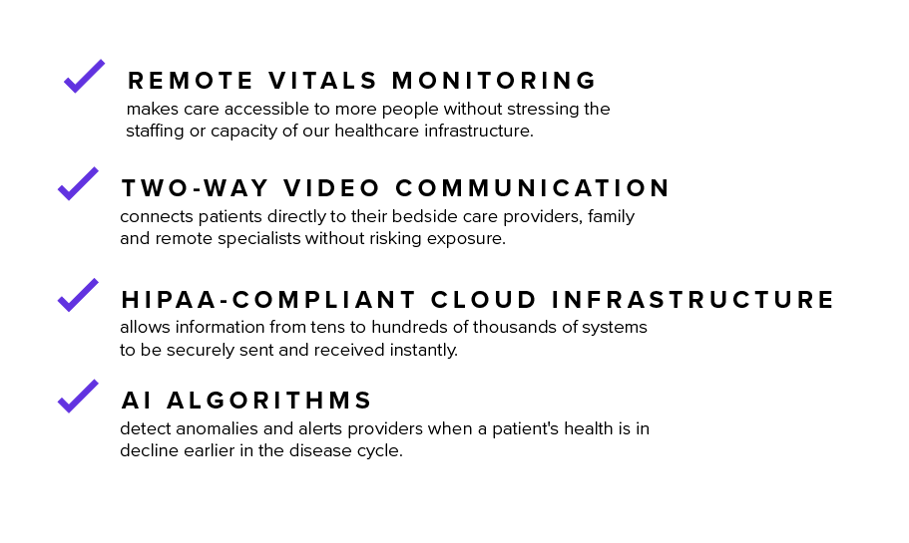The COVID-19 pandemic has exposed significant weaknesses in our healthcare system today. Increased patient volumes stressing staffing capacity, increased caregiver exposure, and dwindling supplies of PPE continue to strain our hospital and senior care systems. The people that this affected the most are the patients and frontline healthcare workers who are working with antiquated resources and without adequate support to deal with these challenges. These problems are not new, but the pandemic has highlighted how ill-equipped our existing system is to deal with them. We have seen that a new delivery model is necessary in order to move forward, which is why many healthcare providers are considering AI and RPM platforms.
COVID-19 Changed Everything
Dr. Tom Hale, Chief Medical Officer at VirtuSense Technologies says, “We’ve been aware of the possibility of a pandemic, but since the last true global pandemic was over 100 years ago—the Spanish Flu in 1918— healthcare delivery has not changed significantly in preparation of pandemic extremes. COVID-19 has unmasked the inadequacies in our healthcare delivery model. Healthcare will be forever changed and it is evident that to not change the model is a recipe for disaster.”
For decades healthcare has operated based on a reactive model of care delivery, with patients acting as the sentinel alerting event. You feel sick, you call a doctor, they give you medicine or send you to a specialist, you get better. Rinse and repeat. “Most care models in the healthcare industry have spent billions on infrastructure to support this model. By definition this causes providers to enter the disease cycle in the middle to the end—never the beginning,” Hale explains.
Research by the American Journal of Medicine suggests early interventions are the key to better outcomes, COVID-19 being no exception.
“Many patients who arrive at the hospital by emergency medical services with COVID-19 do not initially require forms of advanced medical care. Once hospitalized, approximately 25% require mechanical ventilation, advanced circulatory support, or renal replacement therapy. Hence, it is conceivable that some, if not a majority, of hospitalizations could be avoided with a treat-at-home first approach with appropriate telemedicine monitoring and access to oxygen and therapeutics.”
Predictive Analysis
VirtuSense Technologies’ mission is to change this delivery model. Through years of work around AI and sensor technology the team at VirtuSense developed VSTOne. This breakthrough technology has enabled a proactive model for care delivery. VSTOne is a continuous remote monitoring and telehealth device using artificial intelligence (AI) and machine learning (ML) to aid providers in acute and post-acute settings to more effectively care for chronically ill and COVID-19 patients. The platform uses an array of machine vision and IoT sensors to monitor patient vitals (movement, heart rate, respiratory rate, blood pressure, O2, etc.); artificial intelligence to recognize anomalies; and mobile applications to alert healthcare workers before a patient’s condition declines.

VSTOne receives a constant stream of health data from chronically and critically ill patients and leverages AI to interpret it, resulting in actionable alerts and decision support. Instead of waiting for a patient to report their symptoms, VSTOne recognizes early warning signs before the symptoms themselves manifest. Early warning enables early intervention, which means that patients will be able to avoid many serious health issues all together.
Telehealth is the Way Forward
Because of VSTOne’s telehealth capabilities and vital sign data acquisition, caregivers can manage more patients with fewer resources and lower exposure to infectious agents such as COVID-19. Traditionally, a nurse or tech will check patient vitals every few hours to monitor their condition. During the pandemic, every visit means new PPE. Remote monitoring reduces the need for them to enter the patient’s room. With VSTOne, a patient’s vitals are continuously monitored and are available as data points in time or as trends to the nurse’s phone as well as to a central monitoring station. Rather than 3-4 snapshots of the patient’s condition, VSTOne creates a movie of real time trending information. When relevant changes occur alerts are sent immediately so that interventions can begin as quickly as possible. Because of the use of the AI and ML the specificity is remarkable with little to no false alerts.

During pandemic surges, this is crucial for maintaining open rooms and resources for critically ill patients. “VSTOne gathers patient information in the hospital room in real-time. It has telemedicine capabilities with a camera and microphone, so when a nurse receives an alert she can see the patient and communicate with them from her smartphone,” Hale explains.
“There’s nothing more inefficient than going back and forth to patient rooms, taking vitals, etc. This technology will streamline workflows and potentially allow nurses to care for 30–40% more patients with greater accuracy and less work.”
AI is Everywhere
AI is proving to be a valuable tool during this pandemic to detect and prevent the spread of COVID-19. For example, AI technology has been deployed in public places like Beijing’s Qinghe railway station and at hospitals like Tampa General to detect people with COVID-19 symptoms and prevent them from spreading the virus. 2
We developed VSTOne to be the first step toward a better, more connected healthcare system. Many different organizations are addressing isolated parts of the issue, but these solutions are still triggered by patients’ self reporting symptoms consistent with the traditional reactive healthcare delivery model. What VirtuSense has done with VSTOne is create a comprehensive ecosystem that addresses multiple angles of the care delivery problem with greater sensitivity and specificity.

Technology will change how healthcare is delivered both during the pandemic and after. Continuous monitoring combined with AI gives providers the full picture of a patient’s health without burying them in data. The insights and alerts will enable healthcare providers to care for their patients irrespective of time, place and situation making high-quality care accessible to everyone. VSTOne is the first step.
RELATED: Creating a New Healthcare with Dr. Tom Hale


